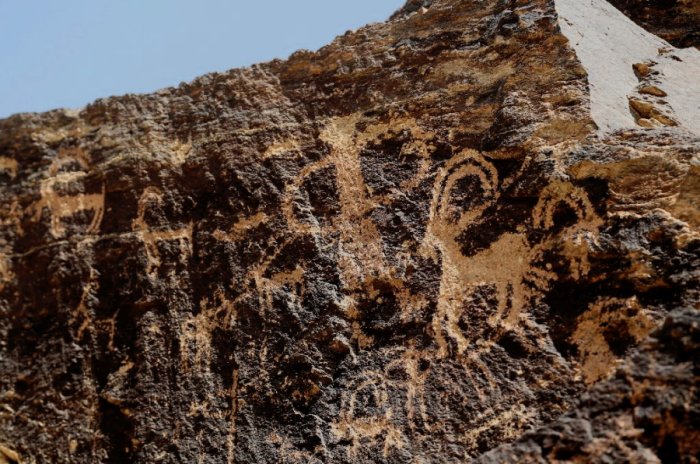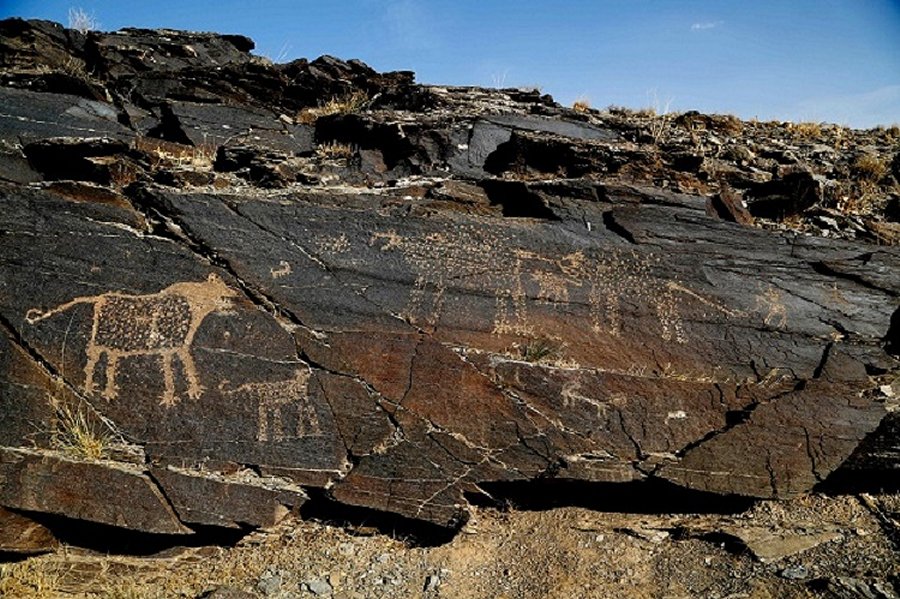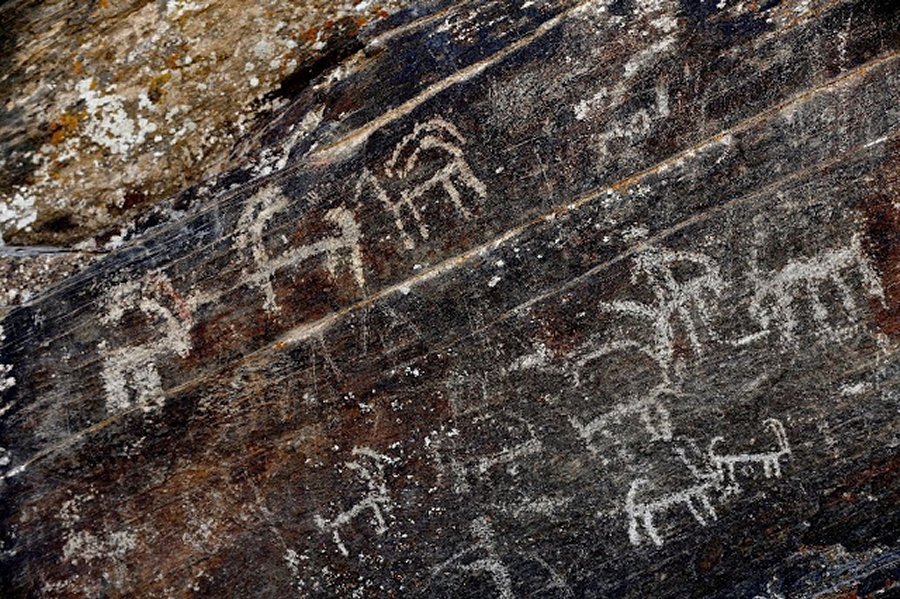Iran’s 4,000-Year-Old Ibex Engraving Offers Clues On Early Human Habitation
MessageToEagle.com – Iran’s ancient rock art could be among the oldest in the world. An Iranian archaeologist has spent years in an almost single-handed quest across the country’s hills and desert plains to uncover ancient rock art that could be among the oldest in the world.

Dr Mohammed Naserifard, an Iranian archaeologist focuses his research on the desolate, rock-strewn landscape outside the town of Khomein in central Iran.
This landscape that consists of valleys and up steep slopes, reveals dozens more images of ancient hunters, tribal dances, deities and beasts – the rock art of great historical value.
All images are thousands of years old, but some of the markings – such as a line of cup-marks that may have been used in religious ceremonies – could be more than 40,000 years ago, putting them among the oldest rock art on the planet.
But getting definitive data has been all but impossible for Iranian archaeologists. The rock art has never been a priority in Iran, where pre-Islamic history can be a controversial subject. Also the sanctions imposed by world powers prior to last year’s nuclear deal meant Iranian scientists were cut off from their global colleagues, deprived of modern lab equipment and the latest research, and faced severe funding shortages.

“Sanctions have deprived us of the technology,” Naserifard told AFP.
“We hope with the situation improving now, we can soon bring this technology to Iran and gain more accurate and scientific information on these engravings.”
Rock art has never been a priority in Iran, where pre-Islamic history can be a controversial subject.
It has been left instead to Naserifard’s personal determination and when he read about the subject in a German magazine, he began to hunt everywhere for examples. Then one day in 2002, in the hills outside Khomein, he got lucky.
“We were on a picnic and all my friends were taking an afternoon nap. I went wandering and observing the rocks in the valley and I found a rock full of shapes,” he recalled.
“I was so excited! Finding these works was like finding a treasure.”
He estimates he has since travelled more than 700,000 kilometres (450,000 miles) across two dozen Iranian provinces, unearthing some 50,000 ancient paintings and engravings.
Naserifard’s discoveries support the growing evidence that humans may have started to develop a common art tradition before leaving Africa, which might explain why the same themes and shapes have turned up in sites as far-flung as California, Spain and South Africa.

The Khomein hills are typical of rock art locations around the world – a once-fertile riverside spot that supported sizeable settlements.
As in other places around the world, the artists were fixated by a single image: in Iran, pictures of the ibex deer account for more than 90 percent of the ancient engravings catalogued by Naserifard.
The Kozo hunters of South Africa obsessively drew and redrew a big-horned sheep that looks surprisingly similar.
“We don’t know why they picked a favourite motif and ran with it, but we see the same pattern in very different places,” said Peter Robinson of the Bradshaw Foundation.
He said the ibex may have been part of an origin myth, or perhaps the engravings were an attempt to summon magical hunting powers or encourage the deer to multiply.
“The similarities across time and space can be eerie. We see examples in which Ice Age art didn’t vary across 30,000 years,” said Robinson.
“But one thing that seems clear is this innate human characteristic to want to mark a wall, to graffiti.”
MessageToEagle.com
Expand for references









